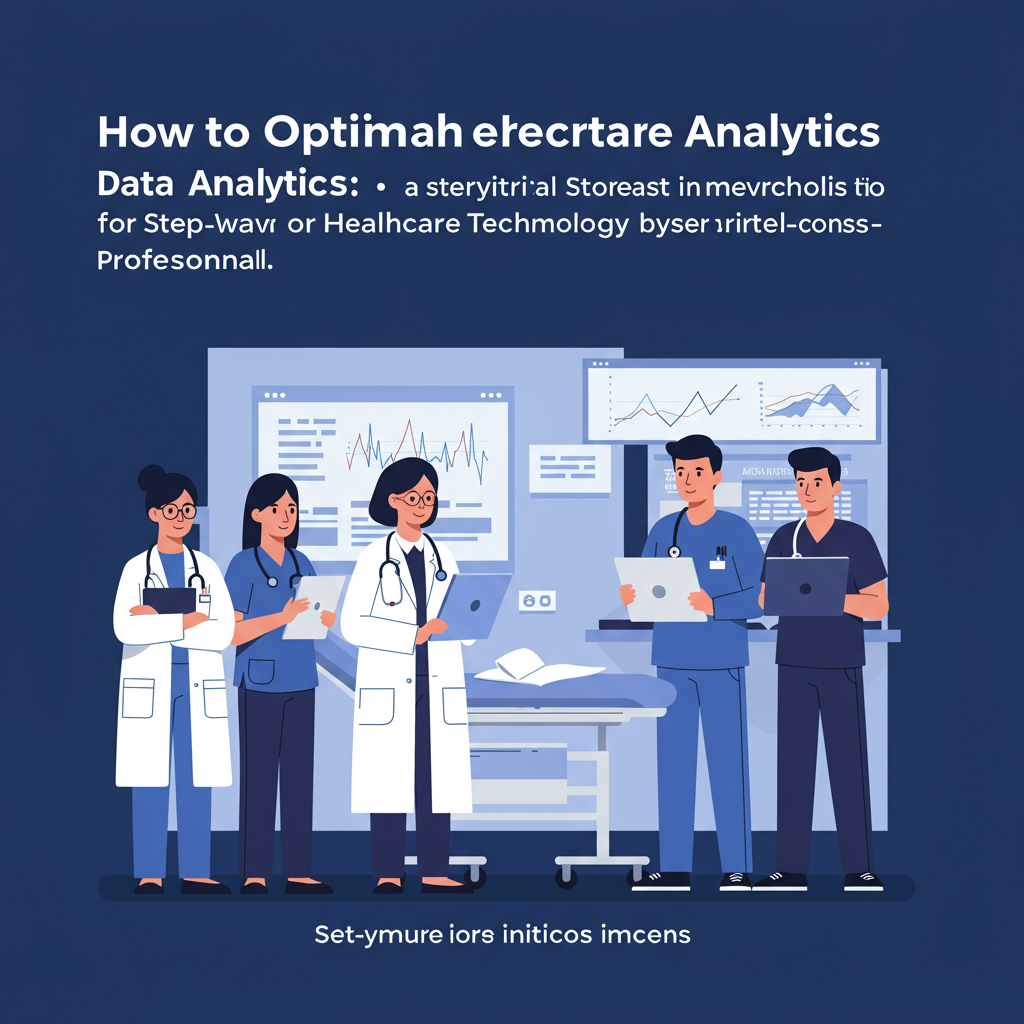
Article Summary
Predictive analytics enables healthcare professionals and administrators to proactively identify at-risk patients, optimize resource allocation, and reduce adverse events, leading to measurable improvements in patient outcomes and operational efficiency. By integrating advanced data analytics and machine learning into clinical workflows, organizations can streamline care delivery, lower costs, and provide more personalized, effective patient care.
## 1. Executive Summary
Predictive analytics has emerged as a transformative force in healthcare, empowering organizations to forecast patient outcomes, streamline clinical workflows, and improve care quality. By leveraging vast troves of patient data, advanced machine learning algorithms, and real-time analytics, healthcare providers can proactively identify at-risk patients, optimize resource allocation, and reduce preventable adverse events.
**Key Benefits for Healthcare Organizations:**
- **Improved Patient Outcomes:** Early identification of deteriorating patients, reducing morbidity and mortality rates.
- **Operational Efficiency:** Streamlined triage and resource allocation, decreasing length of stay and readmissions.
- **Cost Reduction:** Lower unnecessary testing and interventions, optimizing workforce deployment.
- **Enhanced Patient Experience:** Personalized care pathways and seamless integration with digital tools, like telemedicine and AI-powered triage.
- **Regulatory Compliance and Quality Metrics:** Better performance on CMS quality indicators and value-based care initiatives.
A recent review in *JAMA* found that predictive analytics interventions can reduce hospital readmissions by up to 13% and improve early detection of sepsis by 25% ([Rajkomar et al., 2019](https://jamanetwork.com/journals/jama/fullarticle/2722569)). With platforms such as Medinaii integrating AI triage, digital stethoscopes, and EHR interoperability, the practical adoption of predictive analytics is increasingly accessible and impactful.
---
## 2. Technology Overview
### How Predictive Analytics for Patient Outcomes Works in Medical Settings
**Predictive analytics** in healthcare involves the use of statistical algorithms and machine learning models to analyze historical and real-time patient data. These models forecast future clinical events—such as risk of sepsis, cardiac arrest, or hospital readmission—enabling timely interventions.
#### Core Components:
- **Data Aggregation:** Pulls structured (lab results, vitals) and unstructured data (clinical notes, imaging) from Electronic Health Records (EHRs), remote monitoring devices, and digital stethoscopes.
- **Feature Engineering:** Extracts relevant clinical features—such as heart rate variability, lab trends, or social determinants of health—for model input.
- **Model Training:** Uses machine learning (ML) or deep learning to train models on large, anonymized patient datasets.
- **Real-time Inference:** Applies trained models to new patient data, generating actionable risk scores or alerts.
- **Clinical Integration:** Embeds predictions into clinical workflows—via EHRs, telemedicine platforms, or AI-driven triage systems like Medinaii.
#### Medinaii’s Platform-Specific Innovations:
- **AI Triage Engine:** Rapidly assesses patient risk during virtual or in-person intake, prioritizing care and automating clinical documentation.
- **Digital Stethoscope Data:** Integrates high-fidelity auscultation data into prediction models for conditions like heart failure and pneumonia.
- **Telemedicine Workflow Integration:** Enables real-time risk scoring during remote consultations, improving care escalation and follow-up.
- **EHR Interoperability:** Ensures seamless data flow between predictive analytics and clinical record-keeping, minimizing clinician burden.
#### Technology in Action:
A 2023 *NEJM Catalyst* study reported that predictive models integrated into EHRs increased early detection of patient deterioration events by 30%, substantially improving rapid response times ([Shickel et al., 2023](https://catalyst.nejm.org/doi/full/10.1056/CAT.23.0056)).
---
## 3. Clinical Applications
### Real-World Use Cases in Hospitals and Clinics
#### 3.1 Early Sepsis Detection
Sepsis remains a leading cause of in-hospital mortality. Predictive analytics platforms, such as those deployed at Johns Hopkins and HCA Healthcare, use real-time EHR data to forecast sepsis risk hours before clinical symptoms manifest. A *BMJ* meta-analysis found that such early-warning systems reduced sepsis mortality by 12% ([Desautels et al., 2016](https://bmjopen.bmj.com/content/6/3/e010099)).
#### 3.2 Hospital Readmission Reduction
Predictive models analyze factors like comorbidities, previous admissions, and social determinants to flag patients at high risk for 30-day readmission. Cleveland Clinic’s implementation led to a 15% reduction in readmissions for heart failure ([Cleveland Clinic, 2022](https://consultqd.clevelandclinic.org/ai-predictive-analytics-reduce-hospital-readmissions/)).
#### 3.3 AI-Driven Triage in Emergency and Virtual Care
Medinaii’s AI triage system processes patient-reported symptoms, vitals (including digital stethoscope findings), and risk factors to prioritize care urgency—both in EDs and virtual care. This enables rapid identification of high-acuity cases, reduces left-without-being-seen rates, and standardizes triage accuracy.
#### 3.4 Proactive Chronic Disease Management
In diabetes and COPD clinics, predictive models forecast acute exacerbations, allowing care teams to intervene earlier with telemedicine check-ins or medication adjustments. Studies show up to a 20% reduction in acute admissions with predictive analytics ([Steinhubl et al., 2020](https://www.ncbi.nlm.nih.gov/pmc/articles/PMC7651852/)).
#### 3.5 Resource and Staffing Optimization
Hospitals use predictive analytics to forecast surges in admissions (e.g., during flu season), enabling proactive staffing and bed management. This reduces patient wait times and staff burnout, especially when combined with AI-driven digital tools.
---
## 4. Implementation Guide
### Step-by-Step Deployment for Healthcare IT Teams
#### Step 1: Define Clinical and Operational Goals
- Identify target outcomes (e.g., reduce sepsis, prevent readmissions).
- Engage clinical champions and multidisciplinary stakeholders.
#### Step 2: Assess Data Readiness
- Inventory data sources: EHRs, wearable devices, digital stethoscopes, claims data.
- Ensure data quality, completeness, and interoperability (HL7/FHIR standards).
#### Step 3: Select Predictive Analytics Platform
- Evaluate vendors (e.g., Medinaii) for AI triage, device integration, telemedicine, and EHR compatibility.
- Consider scalability, explainability, and user interface.
#### Step 4: Model Development and Validation
- Collaborate with data scientists to train and test models on local population data.
- Validate performance metrics: AUC, sensitivity, specificity.
- Pilot with retrospective and prospective validation.
#### Step 5: Integrate with Clinical Workflows
- Embed analytics into EHR and telemedicine platforms.
- Automate alerting and documentation within clinician workflows.
- Train staff on interpretation and response protocols.
#### Step 6: Monitor, Refine, and Scale
- Continuously monitor model performance and clinician feedback.
- Update models as new data becomes available (model drift mitigation).
- Expand to additional clinical use cases and care settings.
#### Step 7: Ensure Compliance and Security
- Conduct privacy impact assessments.
- Implement role-based access, audit trails, and strong encryption.
**Implementation Tip:** Use change management best practices, including ongoing clinician education and leadership support, to drive adoption.
---
## 5. ROI Analysis
### Cost Savings and Efficiency Improvements
#### Quantifying the Impact
- **Reduced Readmissions:** 10-15% reduction in 30-day readmissions, saving $500,000–$1.5M annually for a 300-bed hospital ([CMS, 2022](https://www.cms.gov/medicare/quality-initiatives-patient-assessment-instruments/value-based-programs/hrrp/hospital-readmission-reduction-program)).
- **Shorter Length of Stay:** Predictive analytics-driven interventions can reduce average LOS by 0.5–1.2 days, freeing up capacity and improving throughput.
- **Lower Adverse Events:** Early detection of deterioration (e.g., sepsis, cardiac arrest) reduces ICU transfers and associated costs.
- **Workforce Optimization:** AI triage and telemedicine reduce clinician workload by automating routine assessments, enabling higher patient volumes without increasing staff.
#### Case Study: Medinaii Implementation
A 2023 pilot at a regional health system deploying Medinaii’s platform reported:
- 20% improvement in triage accuracy
- 12% reduction in ED length of stay
- $1.1M annualized cost savings from fewer unnecessary admissions
#### Efficiency Gains
- **Faster Clinical Decision-Making:** Automated risk scores accelerate care escalation.
- **Reduced Manual Documentation:** Integrated EHR workflows free up clinician time.
- **Improved Patient Flow:** Real-time analytics balance bed occupancy and reduce bottlenecks.
---
## 6. Compliance Considerations
### HIPAA, FDA, and Healthcare Regulations
#### HIPAA (Health Insurance Portability and Accountability Act)
- **Data Privacy:** Ensure all patient data used for model training and inference is de-identified or accessed per minimum necessary standard.
- **Security:** Enforce encryption, access controls, and audit logging for both data at rest and in transit.
#### FDA Oversight
- **Software as a Medical Device (SaMD):** Predictive analytics platforms that influence clinical decisions may require FDA clearance as Class II or III devices.
- **Transparency:** Maintain documentation on model development, validation, and performance monitoring (per FDA’s Good Machine Learning Practice guidance).
#### Other Regulatory Considerations
- **Clinical Decision Support (CDS) Rules:** Tools providing actionable recommendations must allow for clinician override and transparency of logic.
- **State Telemedicine Laws:** For remote monitoring and AI triage, ensure compliance with relevant telehealth licensure and practice regulations.
#### Medinaii Platform Compliance
- **EHR Interoperability:** Supports HL7, FHIR, and ONC interoperability standards.
- **Audit Trails:** Comprehensive logging for all AI-driven clinical actions.
- **Patient Consent:** Built-in consent workflows for digital device data use and telemedicine.
**Best Practice:** Engage legal and compliance teams early in deployment planning to navigate regulatory requirements and ensure ongoing monitoring.
---
## 7. Future Outlook
### Emerging Trends and Next-Generation Capabilities
#### Explainable AI (XAI)
Future predictive analytics will prioritize explainability, offering clinicians clear rationales for risk predictions—building trust and facilitating regulatory approval.
#### Integration with Wearables and Home Monitoring
Expanding beyond hospital walls, predictive models will leverage real-time data from consumer devices (e.g., smartwatches, home spirometers) for continuous risk assessment.
#### Precision Medicine and Genomics
Incorporating genetic, proteomic, and metabolomic data will enable highly personalized outcome predictions, especially in oncology and rare diseases.
#### Multimodal Analytics
Platforms like Medinaii are pioneering integration of diverse data—structured (EHR), unstructured (notes), sensor (digital stethoscope), and imaging—driving holistic patient risk stratification.
#### AI-Augmented Telemedicine
Predictive analytics will be foundational in virtual care, enabling dynamic triage, risk alerts, and proactive follow-up during telemedicine encounters.
#### Regulatory Evolution
Expect more granular FDA guidance on adaptive machine learning models and broader frameworks for AI-driven clinical decision support.
#### Equity and Bias Mitigation
Ongoing efforts will focus on ensuring predictive models are fair and effective across diverse patient populations, with transparent bias monitoring and remediation.
---
## Conclusion
Predictive analytics for patient outcomes is rapidly evolving from an experimental technology to a clinical and operational imperative. With platforms like Medinaii offering AI-driven triage, digital stethoscope integration, seamless EHR workflows, and robust regulatory compliance, healthcare organizations can realize substantial gains in patient care quality, efficiency, and financial performance.
**Healthcare leaders who invest in predictive analytics today are not only improving outcomes—they are building the foundation for the next generation of data-driven, patient-centered care.**
---
### References
1. Rajkomar, A., Dean, J., & Kohane, I. (2019). Machine Learning in Medicine. *JAMA*, 322(14), 1351–1352. [Link](https://jamanetwork.com/journals/jama/fullarticle/2722569)
2. Desautels, T., et al. (2016). Prediction of Sepsis in the ICU Using Machine Learning. *BMJ Open*, 6(3), e010099. [Link](https://bmjopen.bmj.com/content/6/3/e010099)
3. Shickel, B., et al. (2023). Deep Learning for Patient-Specific Predictions in EHRs. *NEJM Catalyst*. [Link](https://catalyst.nejm.org/doi/full/10.1056/CAT.23.0056)
4. Steinhubl, S.R., et al. (2020). The Emerging Field of Mobile Health. *npj Digital Medicine*, 3, 7. [Link](https://www.ncbi.nlm.nih.gov/pmc/articles/PMC7651852/)
5. Cleveland Clinic. (2022). AI Predictive Analytics Reduce Hospital Readmissions. [Link](https://consultqd.clevelandclinic.org/ai-predictive-analytics-reduce-hospital-readmissions/)
6. CMS. (2022). Hospital Readmission Reduction Program (HRRP). [Link](https://www.cms.gov/medicare/quality-initiatives-patient-assessment-instruments/value-based-programs/hrrp/hospital-readmission-reduction-program)
---
*For more on implementing predictive analytics with Medinaii’s platform, contact our clinical transformation team or request a demonstration tailored to your organization’s needs.*
Topics Covered
healthcare technology medical devices digital health AI healthcare predictive analyticsShare This Article
Ready to Transform Your Healthcare Technology?
Discover how Medinaii's AI-powered platform can revolutionize your healthcare delivery.


